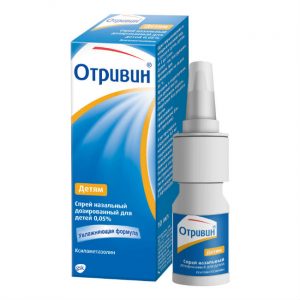Description
Latin name
GRIPPOSTAD C
Release form
Influenza C. Hard gelatin capsules, size No. 1, opaque, with a yellow cap and white body. The contents of the capsules are white to white powder with a yellowish tint.
packaging 10 pcs – blister packagings (1) – packs of cardboard.
Indications
mild to moderate pain syndrome (including headache, sore throat, neuralgia)
fever with flu and other infectious and inflammatory diseases of the upper respiratory tract.
Contraindications
hypersensitivity to the components of the drug
gastrointestinal bleeding
portal hypertension
alcoholism
severe hepatic and / or renal failure
pregnancy (I and III trimesters) lactosis srdlk up to 15 years old srdlp 6-phosphate dehydrogenase
angle-closure glaucoma
prostatic hypertrophy with residual urine
severe arrhythmias (heart rhythm disturbance)
uncontrolled hypertension NZA.
With caution, the drug is prescribed for erosive and ulcerative lesions of the gastrointestinal tract (in the acute phase), liver and / or renal failure, congenital hyperbilirubinemia (diseases, in which the level of bilirubin in the blood is increased – Gilbert, Dubin-Johnson and Rotor syndromes).
Use during pregnancy and lactation
Influenza C is contraindicated during pregnancy (in the I and III trimester) and during lactation.
Composition
1 capsule contains: active ingredients: ascorbic acid 150.00 mg, caffeine 25.00 mg, paracetamol 200.00 mg, chlorphenamine maleate 2.50 mg excipients: gelatin, glyceryl tristearate, lactose monohydrate.
Capsule shell: capsule body – gelatin, water, titanium dioxide (E 171) capsule cap – gelatin, quinoline yellow (E 104), water, dye yellow Sunset (E 110), titanium dioxide (E 171).
Dosage and Administration
Inside. Adults and children over 15 years of age – 2 capsules per dose with a small amount of liquid. If necessary, should be taken again in the same dose after 4-6 hours 3-4 times / day. The maximum daily dose should not exceed 12 capsules.
Side effects
Sometimes: allergic reactions (skin rash, itching, urticaria, angioedema) gastrointestinal tract dysfunction (nausea, epigastric pain, dry mouth) difficulty urinating.
Rarely: disorders of the blood system (anemia, leukopenia, thrombocytopenia).
With prolonged use in high doses (more than 12 capsules daily for more than 5 days) – hepatotoxic effect, blood system disorders (hemolytic anemia, aplastic anemia, methemoglobinemia, pancytopenia) gastrointestinal ulcers, gastrointestinal bleeding, nephrotoxicity (papillary necrosis) )
Drug Interaction
Stimulants of microsomal oxidation in the liver (phenytoin, ethanol, barbiturates, rifampicin, phenylbutazone, tricyclic antidepressants) increase the production of hydroxylated active metabolites, which causes the development of toxic effects.
Ethanol promotes acute pancreatitis. Microsomal oxidation inhibitors (cimetidine) reduce the risk of hepatotoxic action.
Reduces the effectiveness of uricosuric drugs.
Enhances the action of CNS depressants, ethanol.
A delayed onset of gastric emptying (propantheline) may result in a delayed onset of paracetamol.
With acceleration of gastric emptying (metoclopramide), the drug begins to act faster. The toxicity of chloramphenicol is increasing.
Use caution with prolonged use of paracetamol and concomitant oral medication inhibiting blood coagulation.
Myelotoxic drugs increase the hematotoxicity of the drug.
Overdose
Symptoms (caused by paracetamol): pallor of the skin, decreased appetite, nausea, vomiting, hepatonecrosis (severity of necrosis, due to intoxication, directly depends on the degree of overdose). Toxic effect in adults is possible after ingestion of more than 10-15 g of paracetamol: increased activity of hepatic transaminases, increase of prothrombin time (12-48 h after admission) detailed clinical picture of liver damage manifests itself in 1-6 days. Rarely, liver failure develops rapidly and may be complicated by renal failure (tubular necrosis).
Treatment: administration of SH-group donors and precursors of glutathione-methionine synthesis 8-9 h after overdose and N-acetylcysteine – 12 h Need for additional therapeutic activities (further methionine administration, N / acetylcysteine) depending on the concentration of paracetamol in the blood, as well as the time elapsed after its administration.
Storage conditions
The drug should be stored out of the reach of children at a temperature not exceeding 25 ° C.
Expiration
5 years. Do not use the product after the expiry date stated on the packaging.
Sldl3 pharmacy conditions13
pharmacy leave without prescription
dosage form
dosage form
Capsules
Shtada Artsnaymittely AG, Germany




